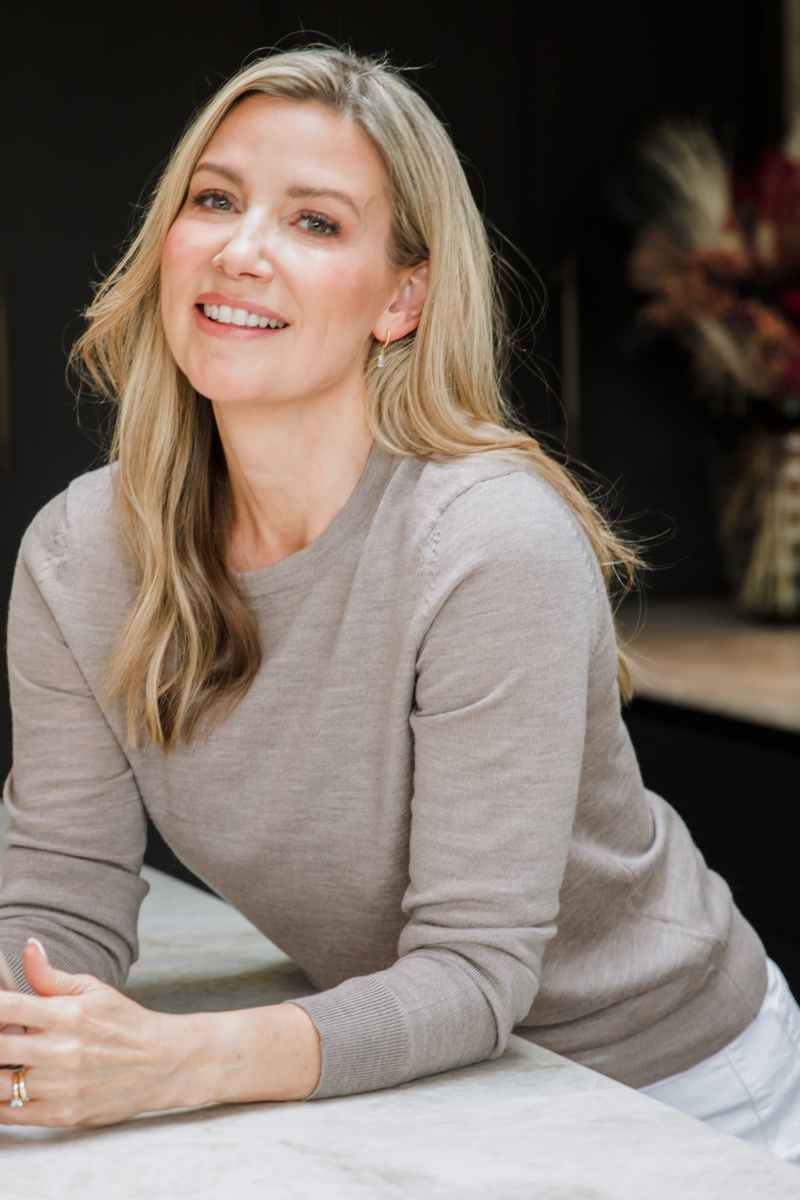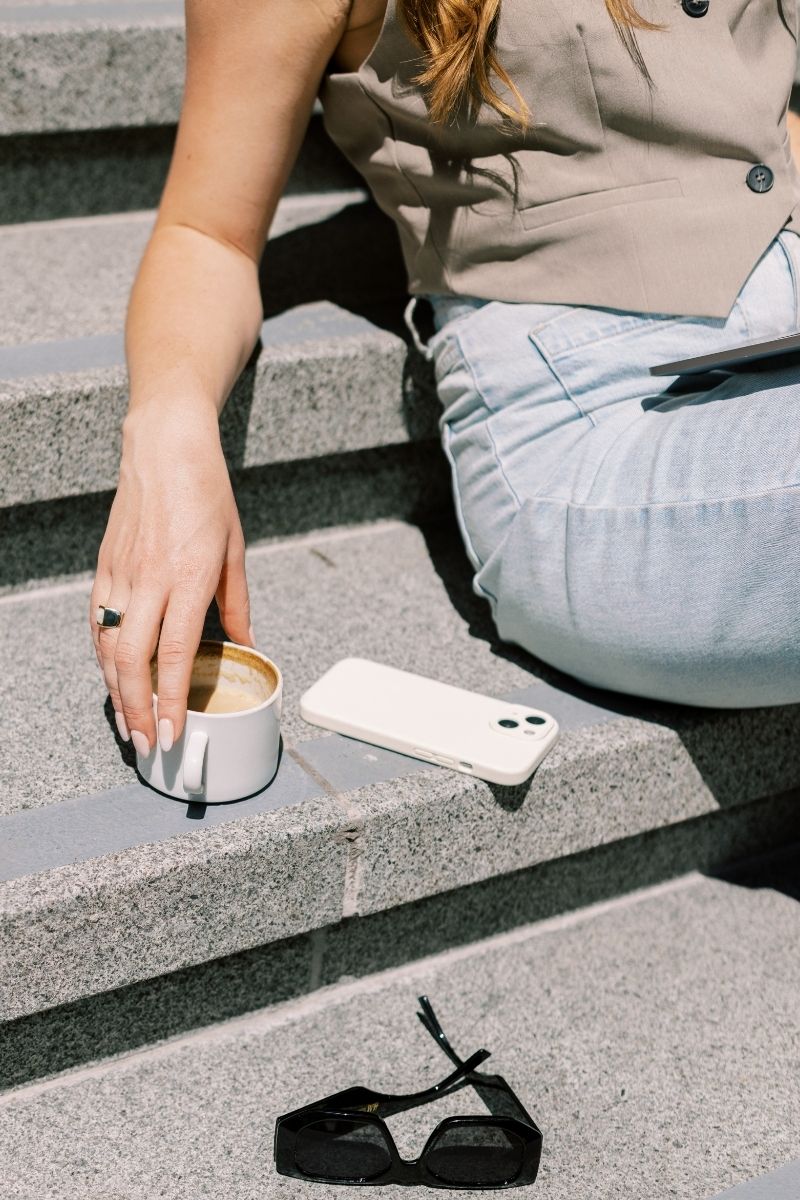When I was a new mom—sleep-deprived and struggling under the overwhelm of first-time motherhood—I would go on a daily walk, pushing my stroller to the closest Starbucks. After a short, numb stroll that I barely remembered I would shuffle up to the counter and order a venti macchiato with caramel drizzle and lots of foam. I’d then point to an overlarge muffin with chocolate chunks or streusel topping or whatever looked good that day. At home, later in the afternoon when my son was napping, I’d bake cookies and brownies galore.
This was something I’d never done before. At the time I said to my own mother: if I have to be stuck at home, I’m going to be the best damn stay-at-home mom there ever was. This included competitive baking, apparently. (I was not in a good emotional place.) To make matters worse, my son was barely on solid food at this stage, and my husband has never had much of a baked-goods tooth, so the only person eating all those cookies? Me.
After many months like this, I noticed my weight pushing north as I slowly regained everything I’d lost after childbirth. But I didn’t change my eating habits. Didn’t stop indulging in my daily Starbucks fix, didn’t stop gobbling down the treats. I had these thoughts: I deserve it. I need this. Life is hard enough; the least I can do is treat myself to one little comfort.
And the truth is, those treats did make me feel a little better—temporarily. I wasn’t actually dealing with my issues, but I had a sense I was doing something positive by pampering myself.
I was wrong.
THE TROUBLE WITH EMOTIONAL EATING
Julia was a patient of mine at my previous family practice in Vancouver. She was a 32-year-old single woman in a stressful job, struggling her way through a challenging dating market. Every disappointing date or rough day at work found her ordering a pizza, grabbing takeout, or eating a pan of brownies.
Of course, every time she did that, she wasn’t really dealing with the deeper issues, and she ended up in a downward spiral of guilt, shame, and self-blame.
Emotional eating can sabotage the best-laid plans for healthy lifestyle change and weight loss. It’s commonly defined as the act of turning to food for stress relief, comfort, or as a reward—not as a means to satisfy hunger.
The occasional use of food as celebration or comfort isn’t a problem. But when we use food as our main coping strategy it can lead to trouble. For some people, the immediate reaction to any negative emotion (anger, loneliness, anxiety, sadness, boredom, fatigue) is to go to fridge. Not only is this an unhealthy way of eating and using food—and can lead to significant weight issues—it also means that the underlying problem and negative feelings aren’t actually being addressed. When we eat to fill an emotional need, rather than to fuel our bodies, we often end up feeling worse—both in the short term (immediate guilt) and by compounding the real problem through avoidance.
With my patient, Julia, we started to talk about strategies around eating, but also about the deeper issues. We discussed her dissatisfaction at work, and she began looking into career change opportunities. We also explored her frustration in the dating market. Ultimately, she decided to spend some time focusing on herself instead of investing so much energy in finding a mate—for the time being. Which meant signing up for belly dancing classes she’d always wanted to take, and pursuing her interest in interior design. She found these changes empowering, and her self-esteem climbed as a result.
Moreover, I worked with Julia to help her develop a strategy for dealing with emotional cravings. She started tracking her eating habits and how they connected with her emotions by using a Food & Mood Journal (click here for a free downloadable version). She began studying mindfulness, took a 6-week course on mindfulness meditation, and became much more self-aware as a result. She began cultivating the ability to pause when her emotional hunger hit, to recognize the cravings for what they were, and to substitute a much better activity, like going out for a brisk walk or calling a friend.
Do you tend to fall prey to emotional eating? Do you eat to numb the pain, to avoid bad feelings, or as a reward?
Let’s examine some common traps and triggers for emotional eating:
EMOTIONAL EATING TRIGGERS
Boredom
There’s a void. You have a vague feeling of restlessness or purposelessness…so you fill up that void with food. Sound familiar?
Procrastination
You know you have to do something, you’re not looking forward to it, or not sure where to start…so instead you go to the kitchen to fix yourself a snack.
Social influence
Family dinners often mean being surrounded by well-meaning people who love you but insist you have another helping, finish off the last bite, take a little more. Or maybe it’s a social setting, you’re feeling uncomfortable…so you head straight for the food table and busy your hands with food.
Habits from childhood
When you were a child, you were rewarded with food. Ice cream for a good report card, perhaps? Or you were soothed with food—remember those brownies after a bad day at school?
Stress
You’re feeling stressed and overwhelmed…so you head straight to the freezer and grab the first pint of ice cream you see. Sound familiar? High levels of stress triggers cortisol release—one of our stress hormones–and cortisol triggers a desire for sweet, fatty, salty food.
Uncomfortable emotion
You’re feeling lonely, or sad, or angry at something that happened. But rather than truly feel those feelings, which are uncomfortable, you dive into a bag of chips and numb yourself with food.
Reflex, habit, or association
Do you have dessert because you think it’s supposed to happen? Is it hard for you to enjoy your afternoon tea without some kind of sweet treat? Do you believe you enjoy a movie more with a giant tub of popcorn on your lap?
Fatigue
You’re feeling tired and sluggish, so you reach for a sweet treat or a sugar-laden caffeine drink with whip cream on top to give you that boost or hit of sugar and calories. Sound familiar?
So tell me: did any of those resonate with you? If they did, you may have an emotional eating issue to tackle. It was something I realized about myself during those early months of motherhood.
So what did I do about my budding emotional eating problem?
I saw a counselor and started talking about my postpartum struggles. Instead of feeding my emotions with brownies, I started taking an honest look at what I wanted to be doing in life. Together with my therapist, I began tackling the bigger issues. It wasn’t easy, but it was the process that helped me realize I needed new direction. That direction took me toward writing, back into a part-time medical practice, and ultimately toward a career that blended my passions in the most wonderful, authentic way.
I found other ways to embrace my season as a stay at home mom—besides baking muffins like I was running a bakery—and I started exercising again, doing more yoga, and finding other ways to relax and cope with the trials of new motherhood.
The good news: my weight stabilized and I started feeling much healthier. I found I didn’t have quite so much need for all those goodies. Now, I actually see my brief stint with emotional eating as a positive, because it helped illuminate the things that weren’t working in my life. It started me on a journey toward the life I truly wanted.
That baby whose stroller I used to push to Starbucks? He’s now 12 years old. His brother is about to turn 7. And they have a much happier, more balanced mother who—while she certainly loves her morning coffee—doesn’t need heaps of unhealthy goodies to feel complete.
FREE BONUS: If you struggle with emotional eating (or you’re a health coach who works with clients on this), one of the best ways of tuning into your habits is by keeping a food & mood journal. I’ve created a free, downloadable PDF to help you do just that! Click the button below to grab your copy.






